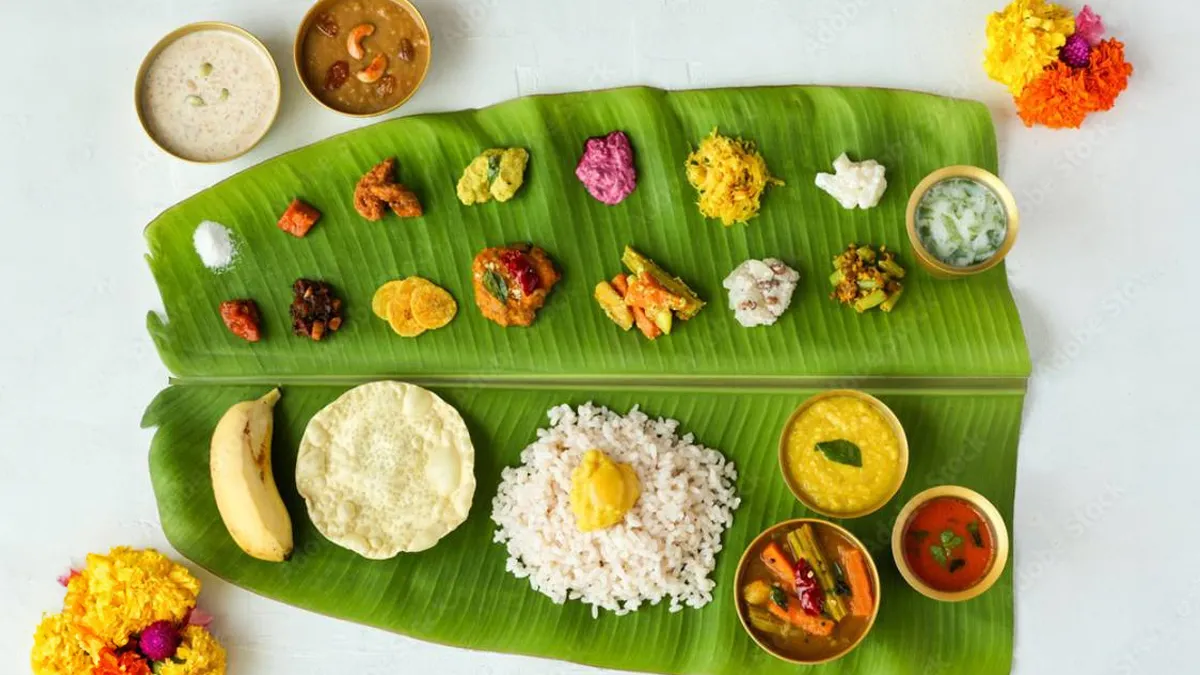
Onam in Kerala is never complete without the grand Sadya - a colourful spread of curries, pickles, sweets, and snacks along with the rice and more dishes. But what makes this feast truly unique is the way it is served: on a Banana Leaf. More than just a plate in which the entire meal is served, the banana leaf carries layers of meaning, from tradition and symbolism to flavour and sustainability. Let’s explore why this simple choice is so meaningful:
Onam Sadya is all about celebrating the homecoming of the beloved King Mahabali and the bountiful harvest season. Serving food on a banana leaf beautifully ties into that sense of natural richness and communal joy.
Banana leaves are completely biodegradable, making them an environmentally conscious alternative to single-use plates or plastics. Kerala Tourism portal states, “A typical Kerala Sadya is served on a banana leaf, emphasising eco-friendliness and tradition. The meal includes a wide array of dishes, often exceeding 25 items, arranged in a specific order.”

They fit Kerala’s tradition of using natural materials, and even every part of the banana plant can be used in some way.
There’s something special about the faint, sweet scent that banana leaves lend to hot food. “The Sadya is the traditional vegetarian feast of Kerala. Usually served as lunch, it consists of par boiled pink rice, side dishes, savouries, pickles and desserts spread out on a plantain leaf. Tradition insists that the tapering end of the plantain leaf should point to the left of the seated guest. Rice is served on the lower half of the leaf. The Onasadhya refers to the Sadya served on the Thiruvonam day, the most auspicious of the four days during the festival”, states the Kerala Tourism official portal.
The leaf’s natural wax coating melts slightly when food is served, releasing an aromatic lift that enhances your enjoyment of the meal.
Don't miss: Onam 2025: 4 Places In Delhi-NCR To Enjoy Onam Sadya

Banana leaves are surprisingly practical. They’re easily rinsed clean, naturally non-stick, and possess antimicrobial qualities, making them both hygienic and reassuring for large communal meals like Sadya.
Don't miss: Dry Fruits Modak Recipe To Try This Ganesh Chaturthi
Every aspect of the Sadya, from where each dish is placed to how you fold the leaf afterwards, carries meaning. For example, folding the leaf inward often signals satisfaction with the meal and folding it outward may connote otherwise, though customs can vary by region.
The banana leaf becomes an integral part of the feast, warming to the touch, fragrant, and a reminder of Kerala’s deep connection to its land, heritage, and community. Happy Onam !!
For more such stories, stay tuned to HerZindagi.
Credit: Freepik and Shutterstock
Also watch this video
Herzindagi video
Our aim is to provide accurate, safe and expert verified information through our articles and social media handles. The remedies, advice and tips mentioned here are for general information only. Please consult your expert before trying any kind of health, beauty, life hacks or astrology related tips. For any feedback or complaint, contact us at compliant_gro@jagrannewmedia.com.